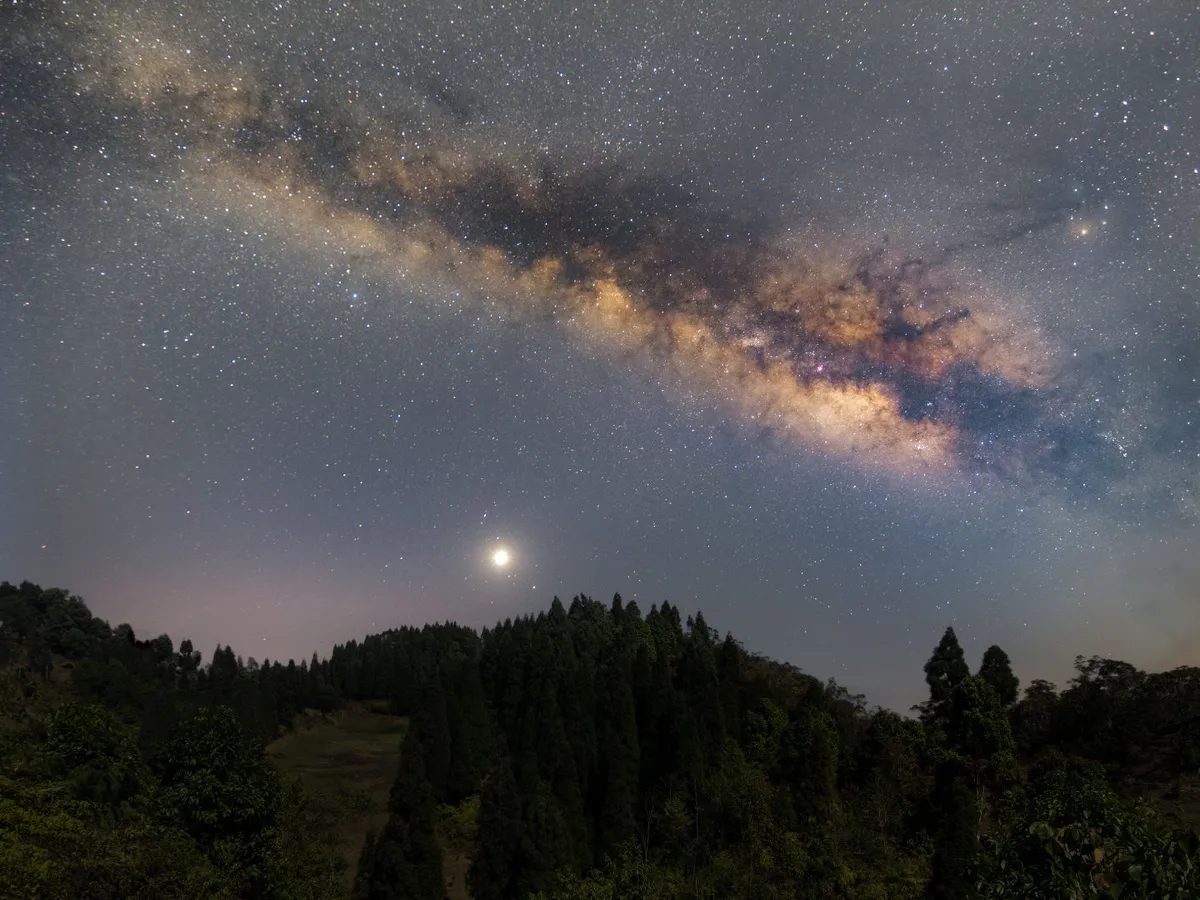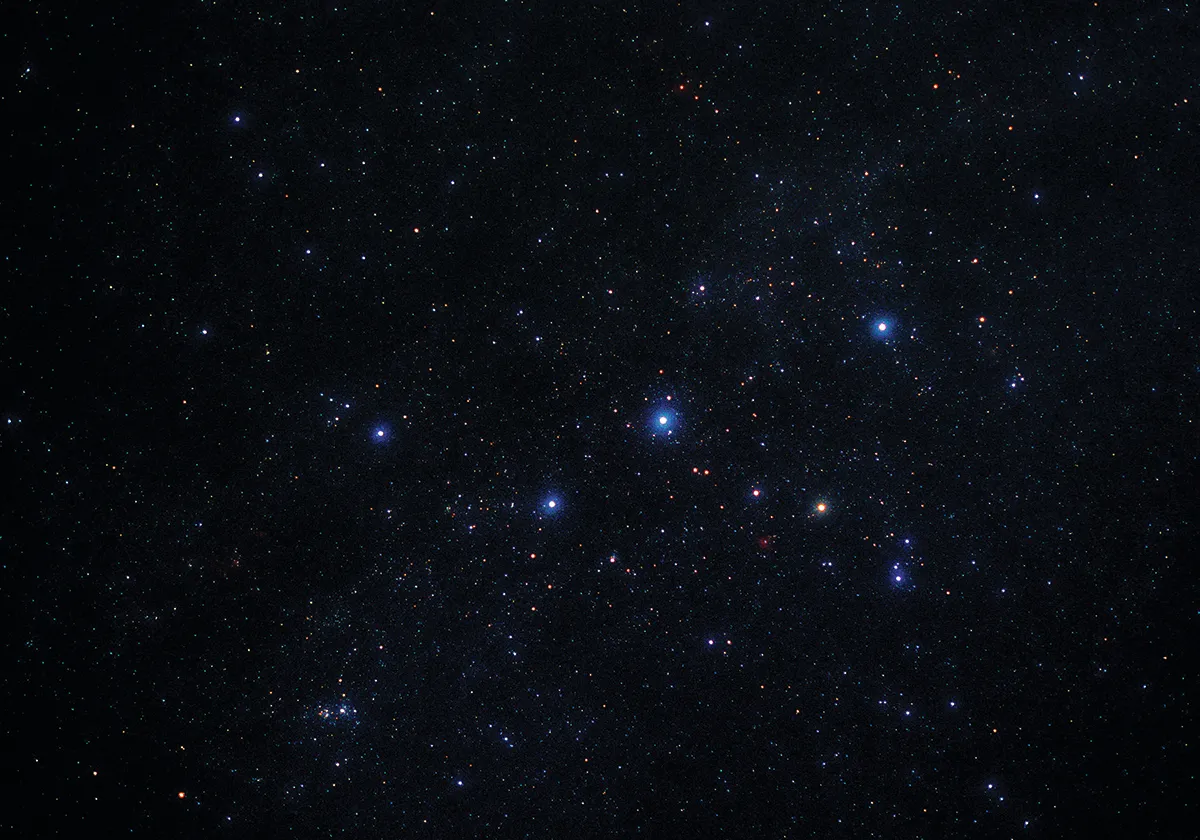In this guide we'll reveal what you can see in the night sky tonight, and throughout the month.
Those of us who enjoy stargazing and observing the night sky can't always plan when and where we're going to get the chance to gaze upwards.
Busy schedules, light pollution, the weather: sometimes finding even just 30 minutes to stand and stare up at a clear, dark night sky and take in the planets, stars and constellations can be a feat in itself.
So when you do find the time, you'll need to know what's visible in the night sky tonight, and the best things to look out for when stargazing.
Complete newcomer? Read our guides to the best telescopes for beginners and astronomy for beginners.

Here's our stargazing guide to what you can see in the night sky tonight.
Our guide is centred around what's visible from the UK, but all northern hemisphere observers should be able to use it, with the odd adjustment to stated times.
In our guide, we use Universal Time (UT) and British Summer Time (BST). UT is the standard time used by astronomers around the world. BST is one hour ahead of UT.
We also use RA (Right ascension)and dec. (declination).
These coordinates are the night sky’s equivalent of longitude and latitude, describing where an object is on the celestial ‘globe’.
For help with these, read our guide to celestial coordinates.
For more advice, read our guide on how to stargaze or sign up to receive the BBC Sky at Night Magazine e-newsletter for weekly tips delivered directly to your email inbox.
If you're south of the equator, find out what you can see in the Southern Hemisphere night sky tonight.

What's in the night sky tonight?
December astronomy highlights
- 4 December: Moon occults the Pleiades (early morning)
- 8 December: Titan transits Saturn (17:38-23:52 UT)
- 13/14 December: Geminid meteor shower peak
- 22 December: Ursid meteor shower peak
- 24 December: Titan transits Saturn (16:58-22:59 UT)
Planets and moons
The Northern Hemisphere’s winter solstice occurs on 21 December, resulting in the longest and darkest skies of the year.
As 2026 approaches, gas giants Jupiter and Saturn are well-placed, although evening twilight knocks on Saturn’s door at the end of December.
We’ve had some great Titan events this year thanks to Saturn’s recent equinox, but these end in February 2026.
This month, there are two really well-timed transits on 8 and 24 December.
Jupiter’s 3.1° axial tilt is significantly less than Saturn’s 26.7°, but enough that its outer moon Callisto typically fails to interact with Jupiter’s globe. However, Jupiter’s next equinox at the end of 2026 is now close enough for some Callisto interactions.

On 7 December, Callisto’s shadow transits Jupiter between 18:58-22:47 UT, a precursor to the moon itself transiting Jupiter’s globe from 02:10-06:20 UT on 8 December.
On 16 December Callisto is occulted by Jupiter’s disc at 07:45 UT.
Then on 24 December a busy night has Io, Callisto and Io’s shadow in transit as Jupiter rises around 17:20 UT.
Io’s shadow leaves the disc at 18:49, Io following suit at 19:14 UT, then Callisto at 20:57 UT.
At 23:22 UT Europa’s shadow makes an appearance followed by Europa at 00:12 UT. Europa’s shadow leaves transit at 02:18 UT, Europa at 03:08 UT.
You’ll need a telescope to see these events but no equipment is needed to enjoy December’s two main meteor showers.
Meteor showers

The annual Geminid meteor shower is active between 4-17 December, the peak predicted for 08:00 UT on 14 December.
A rich shower with a relatively broad peak, the best views will be on 12/13, 13/14 and 14/15 December.
The Moon will a waning crescent and won’t interfere much. The shower’s peak ZHR is around 120 meteors per hour.
The Ursid meteor shower is active between 17-25 December, the peak predicted for 16:00 UT on 22 December, with the best rates expected after dusk that day.
The Ursid shower has a much lower ZHR of 10 meteors per hour. New Moon on 20 December means it will be unaffected by moonlight, as well.
Stars and constellations

The stars and constellations have now turned full circle and Orion, the Hunter dominates the view.
There are lots of deep-sky objects to look out for in and around Orion, due to the presence of the winter Milky Way flowing up to the left of Orion, through the feet of Gemini, the Twins, past the horn tips of Taurus, the Bull and through Auriga, the Charioteer.
After this it passes through Perseus, the Greek Hero, before meandering into Cassiopeia, the Seated Queen.

Cassiopeia’s ‘W’ shape is quite distinctive, and a binocular sweep of the pattern reveals many open clusters.
Perhaps the best known is the pair that lie between Cassiopeia and Perseus, the Double Cluster formed from h and Chi (χ) Persei.
As we say goodbye to 2025, don’t forget to look out for comet 24P/Schaumasse, which is visible in the early morning, passing from Leo, the Lion north of the Bowl of Virgo. It's a fraction brighter than sixth magnitude at the end of the month.

Night sky in December 2025, night-by-night
Tuesday 2 December
Ganymede’s shadow crosses Jupiter’s disc between 06:11 and 09:26 UT this morning. The event ends under daylight conditions.
Thursday 4 December
The 98%-lit waxing gibbous Moon occults the Pleiades from around 03:00 UT. Uranus is 4.6° south of the Moon at this time.
Today’s Moon is full at 23:14 UT, around 12 hours after perigee, making this a perigee full Moon.
Saturday 6 December
Jupiter’s largest moon Ganymede can be seen reappearing from behind the planet’s disc from around 02:35 UT.
Sunday 7 December
Mercury (pictured) reaches greatest western elongation today, located 20.7° west of the Sun in the morning sky.
This evening’s 87% -lit waning gibbous Moon sits 3.5° from mag. –2.4 Jupiter at around 19:00 UT.
Monday 8 December
Saturn’s largest moon Titan transits the planet’s globe this evening between 17:38 and 23:58 UT.
Callisto begins to transit Jupiter’s disc between 02:11 and 06:20 UT.
Tuesday 9 December
A view of low-altitude Saturn at 23:48 UT reveals moons Titan and Rhea are less than one arcsecond apart.
Wednesday 10 December
Bright mag. +1.3 Regulus (Alpha (α) Leonis) is occulted by the 66%-lit waning gibbous Moon this morning around 07:18 UT under conditions of brightening dawn twilight.
Friday 12 December
Ganymede is eclipsed by Jupiter’s shadow from 23:54 UT this evening, reappearing at 05:59 UT on 13 December.
Saturday 13 December
There’s an optimum opportunity this evening to spot crater Scheiner on the Moon. If you’re clouded out, there’s another chance on 29 December.
Sunday 14 December
Today sees the peak of the annual Geminid meteor shower. A reliable performer, this year’s display will have minimal interference from the Moon, which will be in its waning crescent phase at the shower’s peak.

Tuesday 16 December
Titan is occulted by Saturn’s globe at 16:23 UT, reappearing from occultation at 22:05 UT.
Callisto is occulted by Jupiter at 07:44 UT.
Later, Ganymede will transit the planet between its rise at around 18:00 UT and 19:50 UT.
Sunday 21 December
The December solstice occurs today, the Sun reaching its most southerly position against the background stars.
Monday 22 December
This evening sees the peak of the annual Ursid meteor shower, well-timed to occur with the young crescent Moon setting in the early evening.
Tuesday 23 December
The shadow of Ganymede transits Jupiter’s disc between 19:49 and 23:09 UT. Ganymede itself transits at 21:21–23:09 UT.
Wednesday 24 December
Titan transits Saturn between 16:26 and 23:06 UT.
Io, Callisto and Io’s shadow will all be in transit as Jupiter rises.
Friday 26 December
This evening’s 39%-lit waxing crescent Moon sits slightly less than 3.7° from Saturn.
Tuesday 30 December
Ganymede’s shadow crosses Jupiter’s disc between 21:59 UT tonight and 01:24 UT on 31 December. Ganymede itself crosses between 23:02 UT tonight and 02:28 UT on 31 December.
Share your observations and images with us, or send us your astronomy questions to contactus@skyatnightmagazine.com

